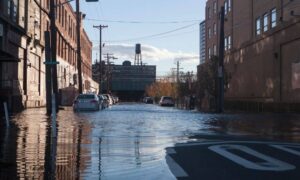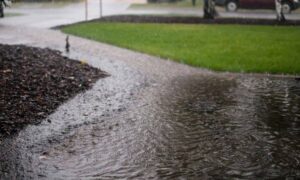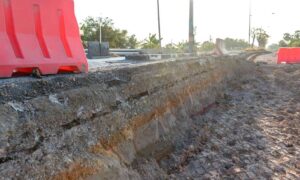
When downtown Nashville flooded again last week, it wasn’t just another rainy-day problem. Cars stalled on Broadway, water filled parking garages, and stores had to close early. Behind all that mess, one thing became clear: stormwater design needs a serious update.
Civil engineers and developers already see the problem. Rainfall is changing fast. Storms are stronger and happen more often. The city’s drains, ponds, and underground pipes can’t always keep up, especially in older areas.
Nashville’s Wake-Up Call
The flash-flood didn’t come out of nowhere. A strong storm dropped more than two inches of rain in less than an hour, and the water had nowhere to go. Drains filled up fast, and some streets looked like rivers.
For most people, it looked like bad luck. For engineers, it showed a bigger issue — old systems built for old weather. Nashville’s stormwater design rules were made years ago, and now they don’t match what’s really happening.
This flood was a warning for everyone working on new buildings, roads, or site projects. If your design doesn’t match today’s weather data, you’re planning for a past that’s already gone.
What the Las Vegas Incident Taught Us
Around the same time, engineers across the country noticed another story. The Boring Company got fined in Las Vegas for dumping drilling fluids into manholes. That might sound far away, but it has the same lesson — when fluids and underground systems aren’t handled right, it causes big trouble.
Nashville faces similar risks. With large projects like the Music City Loop and constant downtown growth, one mistake — a blocked drain, a spill, or an undersized pipe — can lead to flooding, permit fines, and angry neighbors.
Metro Water Services is already working to reduce flooding and follow the federal consent decree that controls how Nashville’s sewer and storm systems work. That means every drainage failure now gets noticed. Civil engineers are expected to plan smarter, not just faster.
Why Stormwater Design Must Evolve

Stormwater management isn’t just about moving water off a site anymore. It’s about where it goes, how fast it travels, and what it carries.
New projects must prove they won’t make flooding worse. That means detention ponds and drainage systems need to be sized right, using newer data and modern models. Nashville’s Stormwater Management Manual, Volume 5 gives clear rules, but many older projects used outdated rainfall numbers.
Civil engineering firms across the region are now updating their designs. Many use NOAA Atlas 14 rainfall data, which better reflects today’s storms. Others use low-impact design (LID) methods like rain gardens, bioswales, and permeable pavers to help water soak into the ground instead of rushing into pipes.
These features aren’t extras anymore — they’re how cities like Nashville can grow without flooding.
Lessons for Local Civil Engineering Firms
So what can firms do differently? First, assume that every city reviewer and inspector is thinking about flood control. Designing to the bare minimum won’t cut it anymore.
- Start early: Talk to Metro reviewers before you finalize your plans. Early feedback saves time and money.
- Update your data: Don’t rely on old rainfall charts. Check the newest numbers before sizing any pond or pipe.
- Build with safety in mind: Oversizing detention systems a little can save huge repair costs later.
- Think maintenance: Clogged outlets cause many floods. Including clear maintenance plans shows real professionalism.
Every detail matters, from pipe slope to inlet spacing. Great stormwater design doesn’t just protect a single lot — it protects the whole community downstream.
Developers Are Paying Attention Too
It’s not only engineers who should care. Developers and property owners now understand that flooding can ruin projects and profits. The cleanup after one flood can cost more than building a better drainage system from the start.
Civil engineers who explain these risks build trust. When a developer sees that your design kept their site dry while others flooded, they remember. Strong design earns loyalty — no ads needed.
That’s why many local firms now talk about flood resilience as part of their brand. It’s not about fear; it’s about planning ahead. In a fast-growing city like Nashville, that kind of reliability stands out.
The New Normal for Nashville
Nashville’s skyline keeps growing — and so do its storms. Engineers now have to plan for more rain, faster runoff, and higher expectations. Metro Water Services is paying close attention to how each new project handles drainage and flood prevention.
Updating stormwater design standards isn’t just a rule — it’s a responsibility. Every strong design helps protect homes, businesses, and roads. Every working system prevents another downtown flood.
The message is clear: civil engineers are the city’s first defense against flooding. Their designs will shape how safe and resilient Nashville becomes.
Final Thoughts
If you’re a civil engineer or developer, this is the time to act. Review your drainage plans. Recheck your rainfall data. Talk with Metro early in the process. And most of all, design for what’s coming — not what used to be.
Nashville deserves infrastructure that’s ready for modern storms. The next heavy rain will test our systems again. Whether your project passes that test depends on how strong your stormwater design is.
Good design protects more than buildings — it protects people and communities. And after what Nashville just experienced, that protection has never mattered more.





